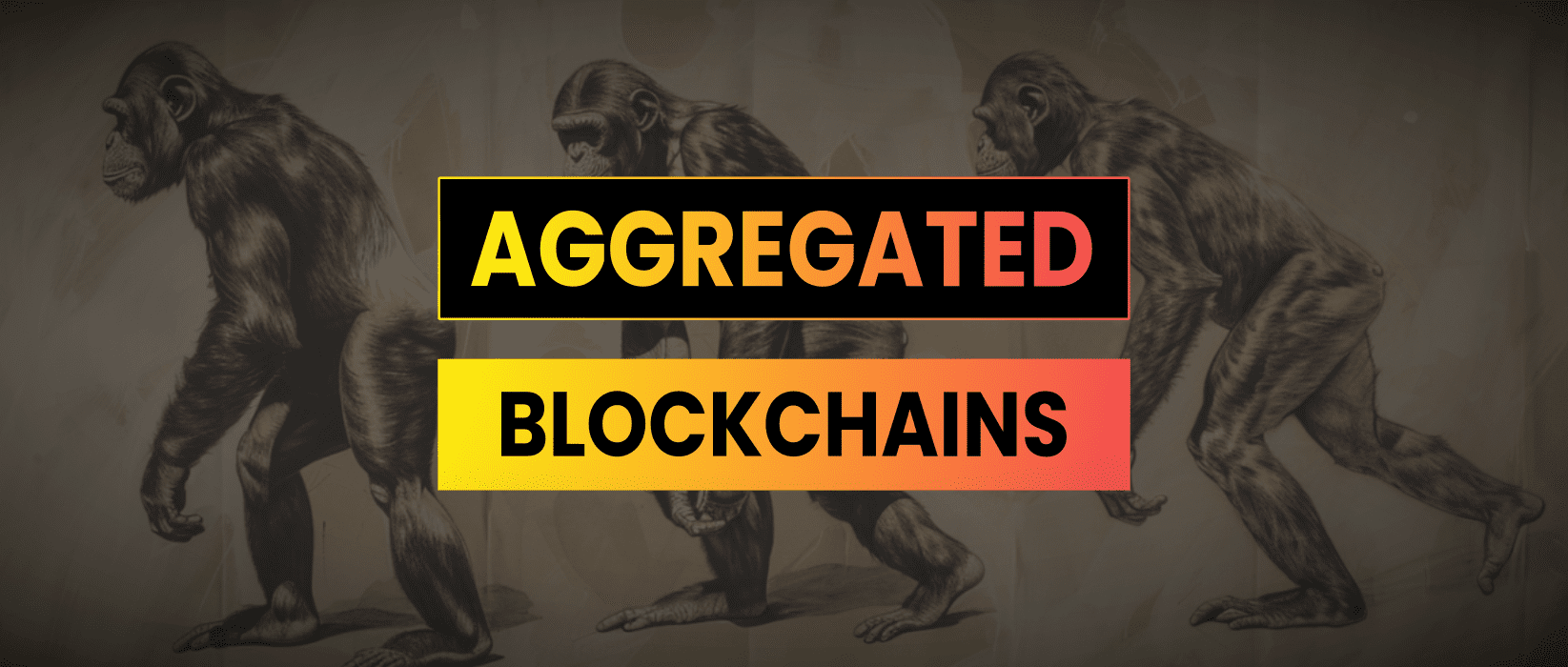Polygon is gearing up to launch its AggLayer v1 mainnet with an event later today at 14:00 UTC Feb 23rd “Aggregation Day 2024”. In this article I’ll look at what aggregated blockchains are and how Polygon’s Agglayer works.
What Are Aggregated Blockchains?
The idea of aggregated Blockchains is to facilitate developers in bridging different blockchains through zero-knowledge proofs.
The first blockchains were monolithic and integrated various components like transaction processing, consensus, and data storage into a single, unified layer. This design simplifies the blockchain architecture but can lead to scalability challenges as every function operates on the same layer, causing potential bottlenecks. Over the past few years we’ve seen a Cambrian explosion in modular blockchains which separate these functions into distinct layers or modules. Each module specializes in a specific function, such as consensus or execution, allowing for more efficient processing and scalability. This separation enables different modules to be optimized or upgraded independently, potentially enhancing the blockchain’s overall performance and flexibility.
Aggregated blockchains take this a step further in an attempt to combine the strengths of both monolithic and modular systems using zero knowledge technology. The AggLayer (a term specific to Polygon’s work in this field) introduces consistent cryptographic security and atomic composability across all aggregated chains, while still preserving their autonomy. Developers will be able to link any Layer 1 or Layer 2 chain to the AggLayer, creating a Web3 network that operates as a unified chain with seamless liquidity and scalability.
What Is Polygon’s AggLayer?
The AggLayer merges a fragmented blockchain landscape into a cohesive network of ZK-secured L1 and L2 chains, offering an experience similar to operating on a single chain.
It combines the efficiency and resource optimization of a modular structure with the cohesive experience of a monolithic system. This layer allows a singular ZK proof to confirm the state across all chains within the ecosystem, utilizing Ethereum as the settlement layer. When a chain publishes a ZK proof of its latest state to the AggLayer, other chains can rely on the accuracy of that chain’s state.
AggLayer is a decentralized protocol with two key roles:
- It aggregates ZK proofs from all connected chains.
- It ensures the safety and immediacy of atomic cross-chain transactions.

This results in instantaneous atomic transactions, unifying liquidity across the multitude of L1 and L2 blockchains. These chains maintain complete sovereignty while benefiting from a vast pool of unified liquidity, facilitating easier liquidity bootstrapping.
For web3 devs it enables us to build on a unified base which can tap into cross chain liquidity and reduce the barrier to entry for users. For end users, the experience is akin to a single, unified environment without the need for frequent and complex bridging or navigating across different RPC networks.
How Does Agglayer v1 Work?
Agglayer is essentially a base layer zero network which sits on top of all the other chains. Users can connect to the network, which will likely become integrated into Polygon 2.0 and all the zk wizardry will be done in the background.
The overall design of the AggLayer is divided into three segments:
- Proof aggregation
- Batch confirmation and finalization
- Cross-chain interoperability mechanism
Proof Aggregation
When users perform transactions on different blockchain chains, each chain processes these transactions and creates a proof. This proof confirms that the transactions are valid and consistent.
Instead of sending these proofs directly to a blockchain like Ethereum, they are sent to a service called AggLayer. AggLayer gathers all these proofs from different chains.
AggLayer organizes these proofs into a tree structure and creates a single, aggregated proof. This aggregated proof shows that all the individual chain proofs are valid.
AggLayer then submits this aggregated proof to Ethereum, ensuring that all transactions across the different chains are consistent and validated.
Batch Confirmation and Finalization
Batch confirmations work in three stages to achieve finality.
- Pre-Confirmation A blockchain chain submits a summary of a new group of transactions (batch) to AggLayer without full validation yet.
- Confirmation The chain provides a complete proof for the batch. AggLayer checks this proof. If it’s valid and all related batches are also confirmed, the batch is fully confirmed.
- Finalization After confirmation, AggLayer combines this batch’s proof with others and posts a single, comprehensive proof to Ethereum. This final step enforces the consistency of all involved chains’ states and transactions.
Chains can choose how fast they interact with each other based on their need for speed or security. They can proceed after just pre-confirmation for quick transactions, or wait for full confirmation or finalization for higher security.
Cross-Chain Interoperability Mechanism
Chains temporarily accept transactions from other chains, assuming these will eventually be validated. If a chain submits a transaction based on another chain’s unverified state, and later the state is not validated, the transaction is rolled back.
This enables transactions across multiple chains to be processed together. Transactions are bundled and processed in order, across different chains. The AggLayer checks if all transactions in the bundle are correctly executed across all chains. If so, the bundle is included in the batch; if not, it’s rejected.
These mechanisms ensure that transactions across different chains are processed consistently and securely. They prevent issues like double-spending or invalid transactions affecting multiple chains.
The end result is atomic tractions where users can submit a bundle of transactions to multiple chains in the Polygon ecosystem, with the assurance that all transactions will either be executed successfully or none will be included.
The initial version, AggLayer v1, is set to be launched imminently and we should find out more during the Aggregation Day presentation later today.


